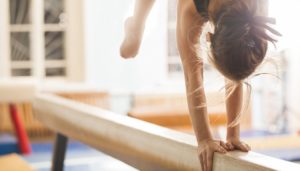Ready to open your own dance studio? Before you start welcoming students, you’ll need to find a suitable space and fill it—not just with music and passion, but with essential equipment and decor, including barre, mirrors, flooring, and more. Here’s what to consider as you price out your dance studio.
Pricing out your studio and utilities
Your biggest expense will be renting or purchasing studio space, and that will vary greatly based on your geographic location, the size of the studio, how close it is to well-trafficked areas, and other factors.
- Renting studio space: This is the most common option for new dance studio owners, and you have two possibilities: you could rent your own studio space or, if you need to start small and grow from there, rent space on an as-needed basis from existing arts organizations, park districts, schools, churches, and even other studios.
- Purchasing studio space: If you plan on buying your own studio, then factor in items like monthly mortgage, broker commission fees, and any additional taxes.
Because these costs can vary so widely, your best first step is to start looking at real estate listings for a sense of how much you can expect to pay in your desired area. You’ll also need to account for the cost of utilities like water, electricity, heating, air conditioning, and internet. Contact the providers in your area to get a sense of how much monthly utility costs may run.
Designing your studio space and purchasing the right equipment
Once you have a great space, it’s time to make it suitable for dancing. Here’s what you’ll likely need to budget for:
- Flooring: Beautiful and durable dance flooring is a critical investment. Choose higher-quality flooring that will last for several years and withstand regular, dynamic use during class. You do not want cheap flooring that will eventually get scuffed, dented, or begin separating off the ground almost as soon as it’s installed. Budget for high-quality flooring and a proper installation job to keep your dancers safe and your sanity intact. For detailed pointers on choosing the right floor, check out this post well as the average flooring costs in your zip code.
- Mirrors: You will need oversized, floor-to-ceiling mirrors, properly installed, and these can be a significant expense. Read this post on selecting the right mirror for your dance studio first.
- Barres: Add in ballet barres for a variety of classes (not just ballet), because they’ll help with stretching and strength drills essential to proper form no matter the dance style. There are many options, from portable barres to pricier wall-mounted options. (Read more about choosing ballet barres here).
- Lighting: Bright, inviting, and functional lighting is a must for a pleasant dance studio space. If your studio comes with fluorescent overhead lighting, consider swapping it out for more energizing and flattering options instead.
- Sound system: Focus on purchasing a few great speakers, and you can play music via Bluetooth from your phone, tablet, or computer. Find out more about choosing the right speakers here.
Budgeting for additional furnishings and decor
There is a lot of variability here, depending on your tastes and budget. But the bottom line is that once you get your dance studio essentials squared away, you’ll still need to fill out the rest of your space. Don’t forget to budget for the following items, depending on your needs:
- Studio signage
- Comfortable entry seating
- Locker/changing area furnishings
- Office furniture and supplies, if needed
- Painting your studio, reception, and office spaces (get price estimates on Fixr)
- Any additional decor, from dance-inspired paintings to framed photos and shelves displaying competition trophies and awards
Add in invisible (but crucial) dance studio costs
Next, consider the less visible but still very important costs of doing business. You’ll need to factor in the costs of business registration, licensing, and permits, as well as the cost of any legal assistance to get these set up. You’ll also need good liability insurance to protect you and your students. And don’t forget music licensing fees from ASCAP, SESAC, or BMI (yes, you really do need them).
Plan ahead for ongoing operating costs
Don’t forget about regular costs that will keep recurring once you open your dance studio. Ideally, you’ll want to have enough money on hand to cover a few months’ worth of budget items like:
- Wages/benefits for any additional dance teachers or staff. According to PayScale, the average dance teacher hourly pay is $24.51/hour, though this also depends on geography and experience.
- The cost of cleaning, maintenance, and upkeep (plus related supplies—don’t forget the toilet paper!)
- Marketing activities and materials (flyers, website upkeep, advertisements, etc.)
- Additional business support/contractors (lawyer, graphic designer, web programmer)
Finally, budget for studio management software to make life easier!
Studio management software can make your life as a dance studio owner so much simpler. Let The Studio Director help you make class registration, payments, student communication and more a breeze!


